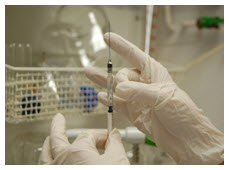Medical devices, when they function properly, have the ability to save lives. If safety and quality measures are not implemented effectively, however, a medical device also has the ability to end a life. The purpose of the ISO 13485 Quality Management system is to minimize risk to the end-users of medical devices through interrelated processes that cover all aspects involved in their manufacturing and development.
What is the ISO 13485?
The ISO 13485 QMS focuses on identifying and tracing, work environment cleanliness and how an organization assesses and manages potential risks. It also serves as a framework that can assist businesses in aligning with the FDA QSR regulations; though it does not ensure FDA certification.
Requirements
When looking at the overall message of the ISO 13485 guidelines, it is rather clear that the key is consistency. Consistency is achieved by following the requirements: documentation of processes, incorporating quality control during all production processes and utilizing and developing an automated quality management system. It is through consistency of meeting the aforementioned requirements that medical device production errors and risks to end-users are minimized.
Principles
The ISO 13485 QMS focuses on eight core principles: customer focus, people involvement, continual improvement, a decision-making process that is fact-based, a process approach, a system approach to management, supplier relationships that are mutually beneficial and leadership. It is through these core principles that medical device manufacturers are able to successfully mplement the requirements outlined in the QMS.
Benefits of the ISO 13485 QMS
Following the guidelines and regulations in the ISO 13485 may seem like a daunting task, but the ISO 13485 actually serves as a tool that offers end-users, medical device buyers and medical device manufacturers numerous benefits.
For the end-user, there is a certain amount of security in knowing that the medical device that is meant to save your life will do just that. By following the guidelines of the ISO 13485 QMS, manufacturers of medical devices can provide this peace of mind to their end-user.
For buyers of medical devices, confidence is received through knowing that the supplier of their medical products follows the ISO 13485 QMS guidelines and regulations. This confidence is passed along to the end-user through personalized, high quality care.
By complying with ISO 13485 Standards, medical device manufacturers are able to avoid unnecessary costs. One example of an unnecessary cost would be a lawsuit for the manufacturing or failure to recall a faulty device, like the lawsuit against Medtronic in 2010. Defibrillation leads in their Sprint Fidelis family were recalled because of faulty wires, but the problem wasn’t detected soon enough. It was estimated that at least 13 people died because of the faulty product. In the end, they agreed to pay out $268 million.
In addition to cost-efficiency and avoidance of lawsuit damages, medical device manufacturers also have more time for marketing. Manufacturers may even realize a sense of confidence in knowing that they are manufacturing and supplying high quality products to their buyers and to end-users.
Overall, compliance with the regulations and guidelines outlined in the ISO 13485 benefits everyone. Peace of mind, protection, cost-efficiency and confidence are just a few of the benefits noted here, but the possibilities are endless. The key to receiving these benefits is consistency, and the final result is countless saved lives.
